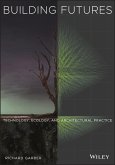The New Architecture of Science explores how the architecture of advanced nanoscience buildings affects the way scientists think, conduct experiments, interact and collaborate. The unique design of the National Graphene Institute building in Manchester, UK sheds light on the architecture of the new generation of scientific buildings. Weaving together two tales of this building, lead scientist Kostya Novoselov and architectural anthropologist Albena Yaneva combine an analysis of the distinctive design features with ethnographic observation of how scientists, building managers, industry people, lab technicians, administrators and house service staff use the building. Capturing simultaneously the complex technical infrastructure of this science lab and the variability of human experiences that it facilitates, contemporary laboratory buildings are shown to be vital settings for the active shaping of new research habits and ways of thinking, ultimately leading to discovery and socio-technical innovations. Drawing on a detailed account of the social life of the graphene building, the authors offer an original interpretation of the mutual shaping of architecture and science at the intersection of architectural theory, science studies and cognitive anthropology. The book will appeal to the academic faculty from different disciplines seeking to develop a more comprehensive perspective of the built environment in its complexity of material and social meanings and to students from architecture, design and urban studies, science and technology studies, and science communication programmes.
Bitte wählen Sie Ihr Anliegen aus.
Rechnungen
Retourenschein anfordern
Bestellstatus
Storno








